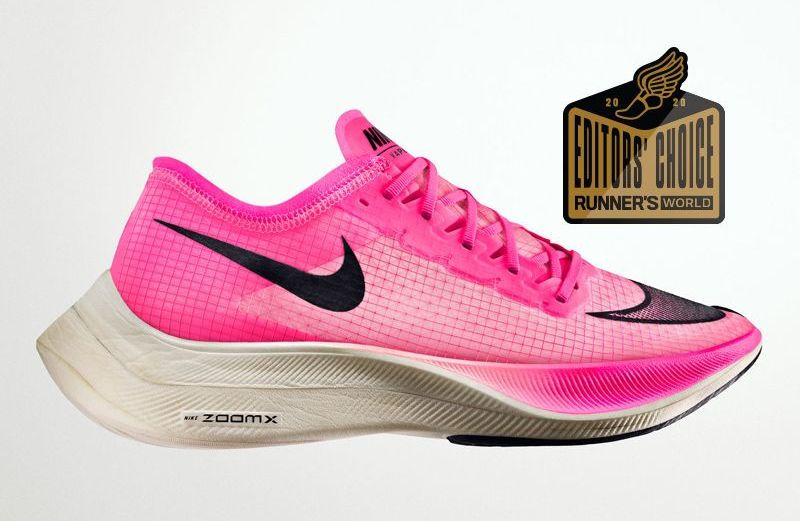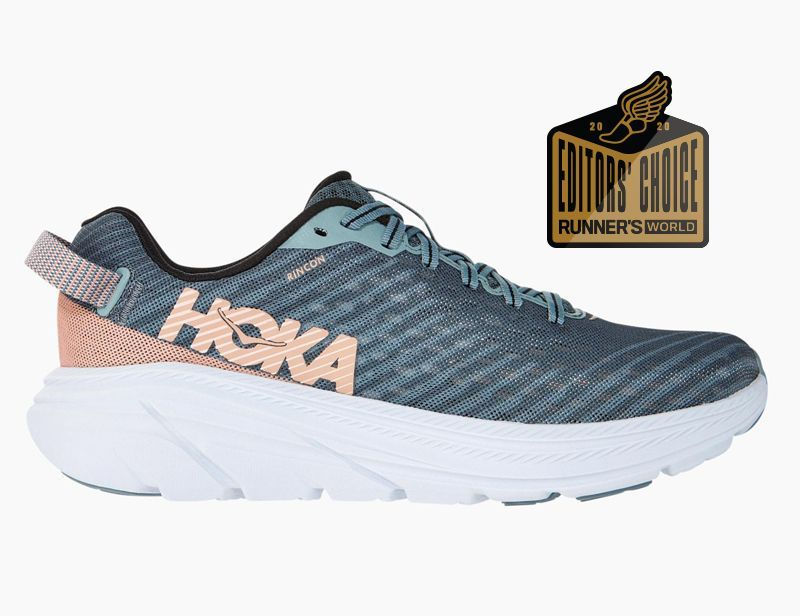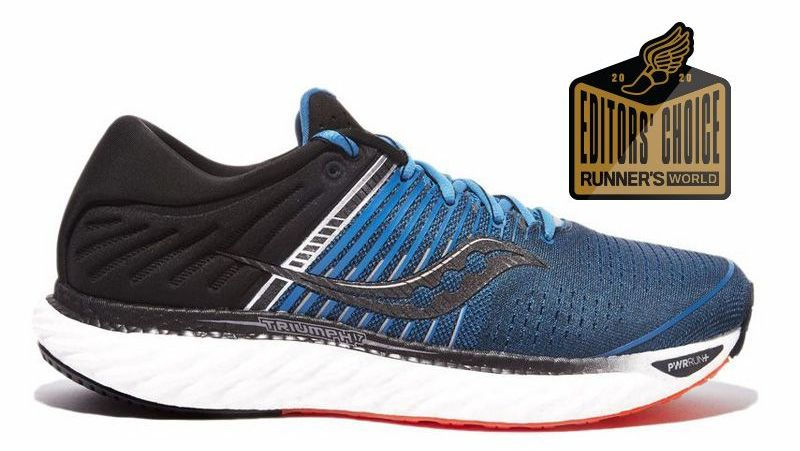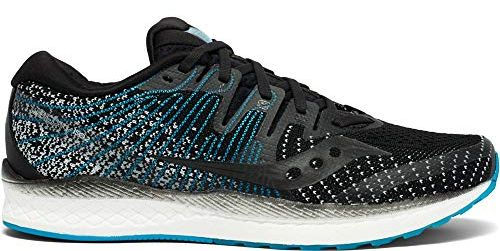The Best Running Shoes for Every Type of Run
- VeteranShack

- Mar 7, 2020
- 14 min read
From cushioned and lightweight to comfy and stable, these are the shoes we’re loving.
You know what you want from your running shoes: light weight, cushioning, support, and a comfortable fit. Of course, the most important part of any shoe is your experience over the hundreds of miles you’ll take them on. To help you find your next great pair, and to get a sense of how updates to your favorite road or trail shoe may change how it fits or perform, we review hundreds of men’s and women’s shoes each year. Read quick reviews of five top options, or scroll deeper for longer reviews of those shoes and other options, as well as helpful buying tips from our gear experts.

In addition to running hundreds of miles in each test model, we measure shoes in our lab and cut apart shoes to see how they’re constructed.
How We Test
Runner’s World has the most comprehensive shoe testing process in the industry. We work with more than 350 local runners of all ability, age, and size, for real-world wear-testing on paved roads, dirt paths, and rocky singletrack trails. After a month of running more than 100 miles, our testers report back their findings on features like fit, comfort, performance, and ride. While our testers are putting miles on the shoes, the same models undergo a battery of mechanical tests in our shoe lab, to objectively measure each shoe’s cushioning, flexibility, sole thickness, and weight. Out test editors combine their own experience in the shoe with data from the lab and feedback from our wear testers to create reliable, useful reviews of every shoe we test.
Does a Shoe’s Weight Matter?
Some runners care a lot about weight, and research shows that you expend more aerobic energy with heavier shoes. Lighter shoes typically have less cushioning, which can make them feel faster. If you’re going long distances, however, the extra cushioning of a heavier shoe might be a better option.

While most shoes have an elevated heel—typically 8 to 12 mm taller than the forefoot—Altra’s shoes are built so your foot sits on a flat platform of foam.
How We Measure Cushioning
Cushioning provides impact absorption. To test it, our Shoe Lab takes measurements in the heel and forefoot, then averages the scores to give you an idea of the overall experience. The cushioning scores are given on a scale of 1 to 100, with one being the least cushioned. In addition to those key stats, we also look at the shoe’s stability features, flexibility, and energy return to help you find one you’ll love. To see the data, click to read the men’s review or women’s review on any of the shoes below.
What Does Drop Mean?
A shoe’s drop is the difference between the heel and the forefoot measurements, or how much your toes drop below your heel. It’s important because a higher drop can lead to more heel striking. Many shoes have a drop between 8 and 12 millimeters, but some shoes have less than 6mm. A few based on minimalist designs have zero drop.
ROAD SHOES
Unlike most shoes that get updated on a 12-month cycle, the Razor 3 is sticking around longer unchanged because it’s been so well received. The novel midsole, dubbed Hyperburst, is an EVA-based foam but differs from the conventional stuff because of the way it’s built. Skechers uses heated CO2 to expand an EVA plastic block, rather than blown air like traditional midsoles. The result is a lighter and more resilient foam. Added to the Razor, which was Meb’s training shoe of choice when he was actively racing, it makes for a high-speed trainer or racing shoe for the rest of us. In testing, we found the Razor likes to be pushed hard and go fast. The foam underfoot is relatively firm, but at the same time feels protective and takes the harshness out of the pavement when you’re cranking. The thin, breathable upper and a web of rubber outsole boost its speediness.
Two hundred and fifty dollars is a load of money to pay for a pair of racing shoes, but if you must have the best, spend it on the Next%. This shoe burned up the roads—and record books—last fall. In fact, because so many runners turned in fast times wearing the shoes, there was a backlash and calls to have the shoe banned. The reason it’s so fast lies in part with the ZoomX foam that sandwiches a carbon-fiber plate. The Next% has 15 percent more of the stuff than the original Vaporfly 4% did, placed mostly in the forefoot to maximize toe-off efficiency. That Pebax-based foam is extremely lightweight, highly cushioned, and has the most energy return of all the shoes we’ve ever measured in our lab. That means you’ll be able to run faster, for longer, without paying a weight penalty or feeling beat up at the end of a marathon. Plus, the new “Vaporweave” upper, which is a woven blend of thermoplastic polymers and nylon, won’t absorb water like Flyknit did. That means your lightweight racing shoes won’t get waterlogged if it rains on your marathon.
The Rincon is still the best Hoka you can buy. The company has rolled out other buzz-worthy shoes, but this lightweight trainer does everything you ask of it—and is insanely affordable compared to some similar models. It’s like the original Clifton—it blends a light and soft EVA with just enough material in the upper to lock down your foot. As the Clifton grew up (and gained weight, unfortunately), it created a hole in Hoka’s lineup for this lightweight option. The Rincon has the same stack heights as the Clifton—29mm under the heel and 24mm under the forefoot—and should fit like that everyday trainer. To help the shoe check in at 7.7 ounces (men’s size 9), Hoka gave it a thin reinforced mesh that locks your foot in place. (Look for a small update in the second half of this year, with slight tweaks to the upper and a small change to the rubber placement.) We’ve been testing the Rincon since last summer. We had initial concerns about whether the exposed foam sole would hold up. After a few hundred miles, we saw some signs of wear, but there was plenty left to protect us from the road.
One of the fastest shoes you could buy in 2018 was this Reebok, and it’s still one of our all-time favorites. The FloatRide Run Fast won’t stress your credit card nearly as hard as shoes like the Vaporfly 4%, but shares some similar traits to help you reach the finish line faster. It all starts with the foam: Reebok is using a Pebax-based foam—much like what’s found in the Vaporfly 4%—which is far lighter than the standard EVA that’s been used in running shoes for decades, but it also delivers excellent cushioning and off-the-charts bounce (energy return). Thanks to that lightweight material, Reebok is able to use a considerable amount of foam underneath the foot without bogging you down. In doing so, it made the heel relatively tall, and the drop from heel to forefoot is quite high, which can give you a sense of speed and propulsion. Keep an eye out for an updated version of this, with a bit more traditional upper, later this spring.
The Ghost has won eight Editors’ Choice awards because it can do everything. We’ve used it for tempo runs, long runs, and even speedwork. As such, it’s that one shoe we typically recommend for runners of all levels—veteran marathoners and new runners alike. A key to its comfort is the mix of foams that deliver a ride that’s cushioned but not too soft. It uses DNA Loft in the heel for a well-cushioned landing with each stride, while BioMoGo DNA under the toes gives you a springy toe-off. The 12th version has a new engineered mesh upper, with zones designed for stretch, breathability, and support, so this shoe fits better than earlier models. The mesh feels comfortable on cooler runs, but it can get a little warm on exceptionally hot days.
There aren’t many shoes you can buy for just a hundred bucks. But, the Forever Floatride Energy proves to be an amazing budget-friendly option. It uses a different—read: cheaper—midsole foam than Reebok’s other Floatride shoes. Instead of pricey Pebax, the company uses steam-molded thermoplastic elastomer (TPE) beads. You don’t get the same responsive sensation as the Floatride Run Fast, but it feels lighter and more lively than most similarly priced shoes, which typically use less-energetic EVA. We loved the low-cost, high-performance combo when we first tested the shoes last year, and we like this updated version just as much. With it, Reebok addressed a few fit issues. A new engineered mesh sits closer to your foot and feels more premium, plus the heel fit has been improved by adding high-density foam to cradle your foot and lock it in place.
The 1080 was already the plushest trainer in New Balance’s stable, but the new version is “bouncy, responsive, and light,” says one former collegiate runner on our test team. Give credit to Fresh Foam, the company’s light and soft midsole foam. The sole is softer than before and has more energy return, but it doesn’t feel overly stiff because New Balance gave it a more pronounced curve, especially beneath the forefoot. And an Ortholite sockliner boosts comfort. All that padding won’t slow you down, though. “Unlike previous 1080s, I actually thought about wearing this for my half marathon,” said a tester who trains at a 7-minute pace. “It’s super responsive and springy, yet the foam keeps it soft enough. I wouldn’t wear these for speedwork, but I ran my fastest long-run tempo in them.” The upper also went through a complete transformation and, unlike most premium shoes, it doesn’t have an overly plush collar lining and tongue. Instead, it uses an engineered knit, a one-piece fabric that is stretchy over the toes but sturdy along the sides of the shoe so it delivers a secure fit. The molded heel has a deep pocket and wraps comfortably up the back of your foot to eliminate any unwanted movement.
Testers raved about the plush feel of the Triumph 17. Of course, you can’t judge a running shoe by comfort alone. Test editor Amanda Furrer initially wondered whether the ultrasoft shoe would inspire her to pick up the tempo on morning runs. But run after run, she kept reaching for the Triumph more often than any other shoe in the testing pile. She said her watch read marathon-pace and she became addicted to the cushioning and bounce. The source of this propulsion is the brand’s new Pwrrun+ midsole. Saucony says this new foam is 28 percent lighter and is more durable than its predecessor. On the run, it feels springier and more flexible. This is our new long-run crush for marathon-training season.
An eagerly anticipated shoe, the Hoka One One Carbon X snagged the 50-mile world record three days after it was announced. But despite the accomplishment, it’s curiously difficult to nail down what this shoe is designed to do. It’s arguably too heavy to be a true road racer, although that doesn’t mean Hoka’s elite distance runners won’t adopt it for upcoming marathons. The carbon plate is designed to make it propulsive, but unlike a certain competitor, there’s no claim of how much or even whether the shoe makes you faster. In any case, the early-stage Meta-Rocker puts the pivot point just behind the ball of your foot to aggressively shove you onto the forefoot. And the carbon fiber plate is designed to hold the rocker’s shape throughout your gait cycle.
We gave the Liberty ISO our Best Debut nod when it released back in 2018. It was a pretty easy decision—our test team rated the shoe over 90 percent on nearly every feature from stability to comfort. What hasn’t been so easy is anxiously anticipating its sequel. Nothing stings like a poor follow-up to a classic; it doesn’t matter whether it’s from a shoe box or box office. Luckily, Saucony directs a success in the ISO 2, with full-length Everun cushioning back as the star in its leading role, and a few new surprises from the supporting extras.
The Torin 3.5 received special treatment last year—Altra made it available in two new uppers: a stylized mesh and a soft, stretchy knit. This year, the Torin again comes in two flavors, but with distinctly different underfoot experiences. The standard model is a racier shoe, stripped of its strobel layer, resulting in less cushioning, height, and weight. The Torin 4 Plush, on the other hand, is extra soft. Our testers who have previously run in the Torin, Paradigm, and even Hoka One One shoes, praised this model for its cushioning and toe room, saying it’s a combination of the best features in both brands. “The cushioning reduces foot fatigue and allows me to run longer more frequently,” said one. “I wore the regular Torin a couple of years ago, and the addition of more cushioning is very noticeable.”
Working with its elite middle-distance athletes, New Balance designed a wild-looking racing flat, the FuelCell 5280, for racing a mile on paved roads. But that has a limited audience, so it created a more versatile version, the Rebel, for the rest of us. Its DNA is similar to the 5280—it’s built to go fast at short distances on the road, but uses more budget-friendly materials and is a bit heavier. To help you go from midfoot landing to toe-off as quickly as possible, the shoe has some unusual geometry. Most obvious is the fin that sticks off the lateral side of the shoe. That’s where many of the fastest runners make initial contact. The beveled piece of foam smooths your landing and guides you efficiently onto your toes. One of our testers raced Grandma’s Marathon in his pair and ran a 5:18 pace through 10 miles before slowing, but he reports that the Rebel performed great for the entire marathon. Try before you buy: Our testers all had to go up a half-size from their normal shoe.
The redesigned Asics GT-2000 8 feels much smoother than its stiff, less-forgiving predecessor. Asics used lighter- density foam for the new shoe; in the forefoot there’s a single, thicker layer of FlyteFoam instead of two. The rear half of the shoe uses a slab of slightly high- er-density foam beneath the FlyteFoam, with a patch of gel cushioning under the heel. The lighter foam and single layer in the forefoot work wonders: Whereas the previous GT-2000 slapped the pavement as your foot hit the ground, the new shoe touches down softly and immediately sets you up for a smooth toe-off. Part of the easier transition comes from the additional flex grooves in the high-abrasion heel rubber; coupled with the lighter heel foam, the GT-2000 8 feels forgiving yet responsive. The stability is subtle but noticeable if you’ve only run in a neutral shoe like the Cumulus 21. To improve the engineered mesh upper, Asics moved its logo back and repositioned the toe reinforcement beneath the mesh, which makes the toebox more accommodating. The updated fit lets you wear the shoe a little loose without feeling unstable. But the retooled midsole is still the best part; for mild over- pronators, it’s an absolute pleasure to run in.
The king of the lightweight trainers, Saucony’s Kinvara has won multiple Runner’s World awards over its lifespan. The 10th iteration may not recreate the magic of last year’s Editor’s Choice-winning model, but it’s still a worthy successor. Need a racing shoe that’ll deliver without taking out a second mortgage? It’s capable, just ask Jared Ward who casually dropped a 2:09 at Boston while sporting the fast-selling Dunkin’-printed model. Or maybe you need a neutral cushioned everyday trainer with a breathable upper? The Kinvara’s EVA-and-Everun midsole will be your trusty companion for the next couple hundred miles.
TRAIL SHOES
After only three iterations, Salomon’s Sense Ride has acquired a cult-like following. Why? It works extremely well for novice trail runners as well as those who know their way around a mountainous ultra. It’s firm underfoot, but this version feels slightly softer, thanks to its road shoe–inspired cushioning system, which pairs a propulsive midsole foam with a second shock-absorbing layer. The combination works for long distances on trails and short stretches on pavement, while the moderate heel-toe offset still feels familiar to runners who haven’t approached zero-drop territory. Plus, you’ll find a rap sheet of trail essentials: rock plate, debris-resistant mesh, storable quick-pull lacing, and an internal fit sleeve that wraps the foot atop a molded Ortholite footbed. Our testers’ favorite feature, however, is the high-traction tread. Even though the deep diamond lugs can clog with mud, the aggressive outsole holds strong on slippery leaves and feels noticeably flexible on steep climbs. And on long runs over the rock- laden Appalachian Trail, we found the Sense Ride comfortably protective.
The Saucony Peregrine won our Editors’ Choice award in 2016, and this update follows its winning formula: Deep lugs cover the outsole for fantastic traction at any speed. Faster trail runners loved the confidence-inspiring grip when running over muddy, snowy, icy, or slippery terrain that can turn into a wipeout event with only a minor misstep. Credit that to the 78 lugs—a ridiculously high number for any model—that cover the sole. The lugs even extend out from the side of the shoe a bit, ensuring steady footing when running laterally along steep terrain. This latest version features Saucony’s ISOFit upper, which offers a nearly customized fit with the help of wings on each side of the shoe that attach to the laces. We appreciated that fit most on long trail runs when our feet started to swell.
You could set your own FKT on a mountain built from the sheer number of La Sportiva’s trail offerings—the brand’s 16 trail shoes are devoted to nearly every type of distance, weather, and terrain imaginable. But if you’re looking for the model that handles the widest range of conditions, it’s the Kaptiva. The shoe borrows the best bits from La Sportiva’s ultra- distance arsenal (like firm cushioning to support you well past 25K) and its short-stretch picks (a 6mm drop with confident ground feel) onto a sole that works for most trails most of the time. On top, the Kaptiva has a skin-hugging compressive mesh upper with a tall collar that seals out dirt and slips on like a pair of crew socks. Sticky rubber tread keeps you anchored on steep descents.
The Bushido is built to conquer the gnarliest trails. It has a reinforced TPU web that shields the upper and adds lightweight stability, while a compression-molded EVA midsole is firm from heel to rubber toe cap. Two distinct treads round out the shoe’s armor underfoot, with toothy, multi-directional pegs at the center, and bevelled lugs that climb up and over the outsole’s rim. The combination lets the Bushido bite into steep ascents, brake hard on downhills, and anchor against sideways slides. What impressed our testers the most was the Bushido’s burly traction and ruggedness that come in a surprisingly light package. The shoe’s newly padded tongue and forefoot rock plate didn’t feel cumbersome—even after some ultrarunners hit mileage well in the double digits—and remained nimble enough for the most technical climbs.
The Supercross is essentially a budget-conscious version of Salomon’s Speedcross, a shoe designed to blaze over soft, sloppy trails. It has the same styling and aggressive lugs, but everything is built for better value. The outsole still has deep tread that bites into muddy trails, but it’s made with a more durable (read: harder) rubber compound than the Speedcross. It also has a similar ripstop upper, but the tongue is different and you have to tuck the speed laces under an elastic strap—the Speedcross has a lace garage at the top of the tongue to tidy up loose ends. But, even so, this shoe costs just $110 and has plenty of cushioning and protection for technical singletrack trails. Testers loved that the shoe’s upper shed muck rapidly and still looked clean after a month’s worth of abuse.
Leave it to rock climbers to inspire the lightest trail shoe we’ve ever tested. After all, these are people who cut the tags out of their clothing just to shave grams. The Norvan SL (Arc’teryx code for “superlight”) was designed for rock climbers as a compact and lightweight shoe to quickly traverse between climbing routes. The SL fits snugly. It’s narrow underfoot, especially below the arch, while the forefoot widens to provide more ground contact and better traction when toeing off on steep inclines. That ultralight build comes with a cost: cushioning. With no rock plate and minimal cushion, you know immediately when you’ve taken a bad step. The paper-thin TPU mesh upper is see-through—here’s your chance to wear some flashy socks—and is super-breathable in the summer, and drains well on wet days.
The latest trail offering from Tony Post’s Massachusetts-based shoe company affirms a not-so-recent development in runner preference: People like shoes that are wider and flatter than the norm. “The space this shoe provides reminds me of Altras,” one wear-tester noted. The comparison with Altra Running’s trail options is obvious, given the brand’s commitment to anatomically shaped, low-drop shoes. Although the RW Shoe Lab ranked the shoes “moderate” for energy return, testers found their springiness adequate for up-tempo efforts. They also noted the shoes don’t feel particularly lightweight, but the sturdy cushioning offered enough stability and support for long runs. “It’s the perfect balance of weight, cushioning, and comfort,” said one tester.

























Comments